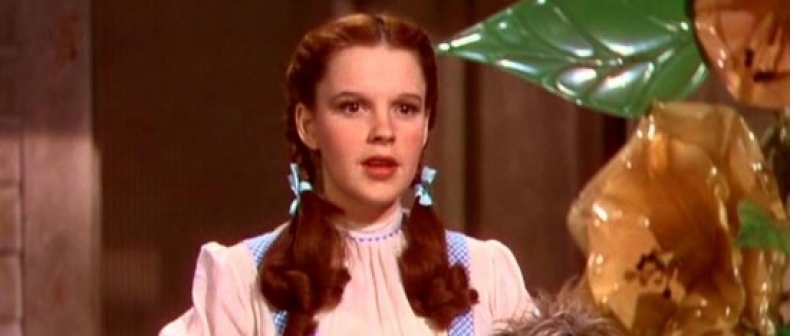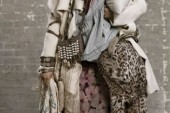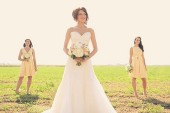
It’s the most famous gingham dress in the world, and it can be yours for an estimated half a million dollars. It was reported on Monday that the last remaining dress which Judy Garland wore as Dorothy Gale in The Wizard of Oz will be auctioned at Julien’s Auction in Beverly Hills. Before the sale in November, the costume will be on display in London, England, where it will be reunited with a pair of the original ruby slippers, on loan from the Smithsonian.
The simple dress and blouse combo isn’t the only famous costume which will be sold: the auction will include items worn by Katharine Hepburn, Bette Davis, Steve McQueen, Julie Andrews and James Bond (okay, Pierce Brosnan). But it’s Dorothy who’s getting the most attention. More than 70 years after the movie was released, the dress is one of film’s most iconic costumes, instantly recognizable to even those who have never seen the musical. It’s really a shame that a museum like the Smithsonian doesn’t own this important artifact; one person shouldn’t be able to hide that dress away, even for half a million dollars.
As we’ll be reminded in a couple of weeks, Dorothy’s dress also remains a very popular Halloween costume… although I wish my eyes could un-see this ‘sexy Dorothy’ outfit.
Even I was pulled into the Gale-force power of the little blue dress. It was Halloween during my undergraduate years, and, even though I had dressed up like a woman for the past three years, Judy Garland was my ultimate drag destination. I found a patch-work patterned ‘farm’ girl dress (the type you might see on CMT) and red-pleather platform Mary Janes, which my friend and I bedazzled with sequins. I shaved my legs and chest, put my longish hair in a French braid and wore enough makeup to crush the Wicked Witch of the East. Lastly, we added large, fluttering fake eyelashes. In the end, the person I most resembled was Liza Minnelli, which isn’t too far off the mark.
So why do we still want to be Dorothy? First, a bit of background, as the little girl from Kansas could have been portrayed quite differently.
The money men at MGM, nervous about the risk of such a big budget children’s film, wanted Dorothy to be played by Shirley Temple, who was one of the biggest stars of the 1930’s (and also much closer to being a little girl than 16-year old Garland). Unable to get her, the film’s costumers tried to turn Judy into her, with a ton of makeup, a fancier dress and a grotesque blonde wig. (The song ‘Over the Rainbow’ was also almost cut, so clearly these people didn’t know what they were doing.)
The troubled production shuffled through six directors, including George Cukor, who was known for his sensitivity to his actresses. He had two lasting influences on the film: he told the costumers to ditch the blonde wig and makeup, and he told Garland that if she ever was confused about how to play it, remember that she was just a little girl from Kansas who simply wanted to go home.
Armed with this advice, Garland turned in an emotionally sincere performance that continues to be underrated. By singing of escaping to a “place where there isn’t any trouble” in ‘Over the Rainbow,’she provided a hopeful anthem for peoples as different as 1940’s Britons (where the song was very popular during WWII), to oppressed gay men, who returned the favour by planting a rainbow on their flag.
When Dorothy and company arrive at the Emerald City to find that (spoiler alert!) the Wizard is a sham, the gifts he bestows on the Scarecrow, Tin Man and Cowardly Lion are obvious (of course they’ve always had a brain, a heart and courage!). Dorothy’s lesson is a little more complicated, and it’s not as saccharine as ‘There’s no place like home.’
Dorothy learns how to stand up for herself and confront villains head on. After the disappointments of her Kansas family, she creates a new, modern family for herself of anthropomorphic animals and farm equipment. Simply put, Dorothy grows up.
Happiness doesn’t come from running away or the wave of a wand. It comes from within. As Garland biographer Gerald Clarke argues in ‘Get Happy’, that’s what she actually means when Dorothy tells the dopey Glinda, “If I ever go looking for my heart’s desire again, I won’t look any further than my own backyard.”
That’s the lesson that we associate with the dress, the ruby slippers… even the pigtails. You can’t buy that, even for half a million dollars.
____
Max Mosher writes about style for Toronto Standard. You can follow him on Twitter at @max_mosher_.
For more, follow us on Twitter @TorontoStandard or subscribe to our newsletter.













